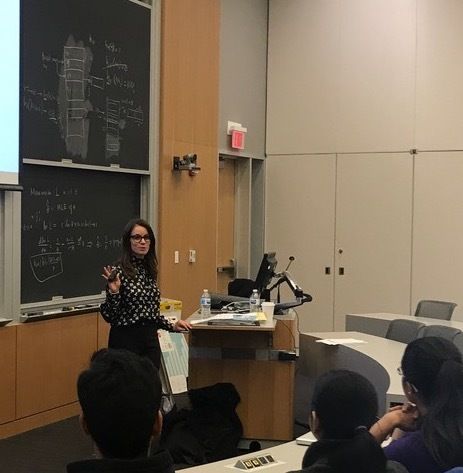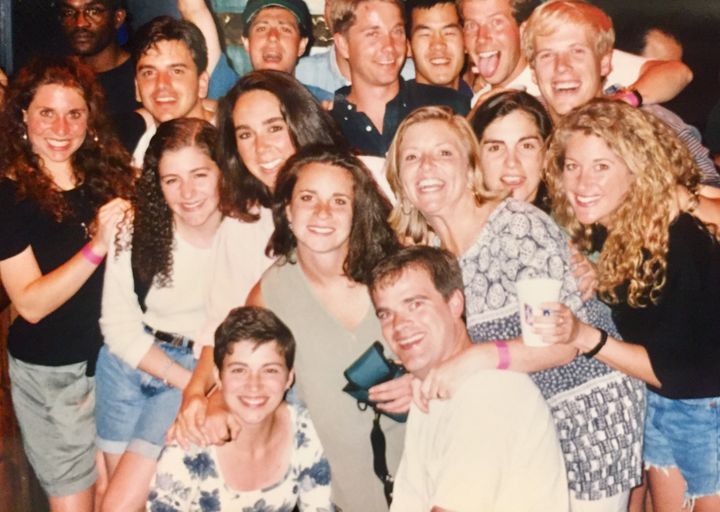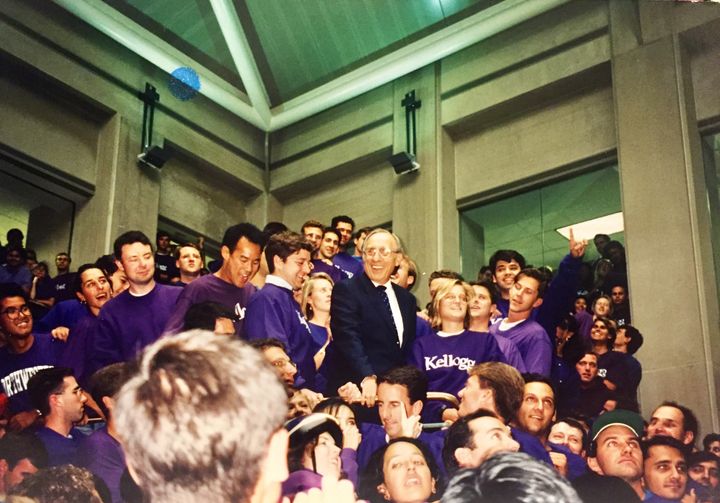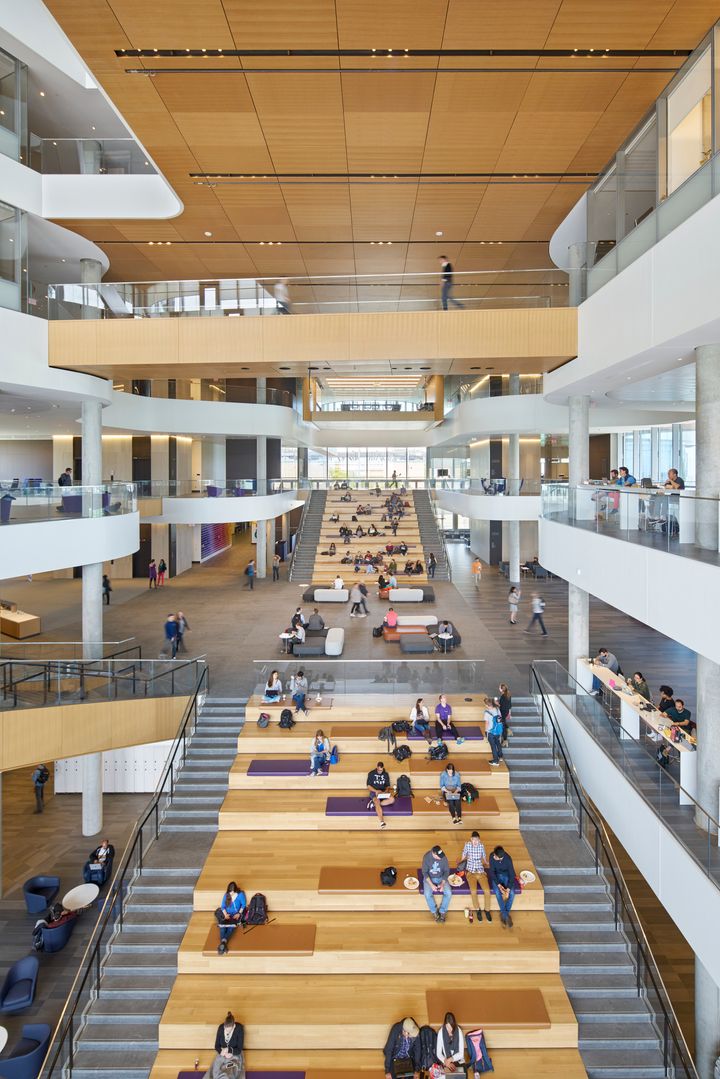In 1992, I decided to go to business school. I took the GMAT, filled out eight applications and set out on a road trip to visit my top four campuses. When I walked into the Kellogg Graduate School of Management at Northwestern University, it had me at hello. It was something about the vibe, the people, something in the air. When I got that thick acceptance package in the mail (this was long before the online responses), I accepted immediately.
It didn’t take me long as an organizational behavior and management major to figure out that that thing I was so drawn to had a name. It’s called Culture.
I recently had the honor of being invited back to Kellogg to teach an Organizational Behavior class alongside the amazing Dr. Gail Berger, an expert in the 3Cs that drive organizational success: Culture, Collaboration and Communication. I talked about the importance of bringing your human to work (which just happens to be the name of my forthcoming book, out next fall by McGraw-Hill), and the impact of technology on decision making and cultivating influence—all very important skills for a group of future leaders. I went back for a second reason as well. Kellogg recently opened a new 415,000 square foot state-of-the-art building called the “Global Hub,” and they offered me a tour.
One of the chapters of my book is called Space Matters. And boy, does it.

Me teaching in Dr. Gail Berger’s class on Organizational Behavior.
Thank G-d It’s Friday
As soon as I arrived at Kellogg in the fall of 1993, I knew I made the right choice. I loved everything about it—the classes, the collaborative approach to teaching, and the people. We worked hard. And we played hard.
Each Friday, students would get together and celebrate the end of a big week of studying, let our hair down, and have a beer at the “TG,” our shortened version of TGIF. Construction was going on for a brand new atrium which would open the following September, but until then, we were packed into a ratty student lounge in a building called Leverone. There was always a keg and pizza. It got so crowded in there we had to turn sideways to pass each other.
That’s one way to connect!

My friends and I (center) letting loose at a typical “TG” at Kellogg.
Setting aside the fire-hazard factor, I loved these Friday afternoon gatherings. These were high-energy, hilarious, and a little bit rowdy. I loved being able to see my friends in one place and meet new people. I was amazed that the legendary Dean Don Jacobs, who sadly passed away last week, would join us in the festivities. Looking back, the relationships I built in that hot, crowded room led to some of the closest relationships—both personally and professionally—of my life. And, for some of my classmates, those relationships became even closer. There were more than 10 marriages that came out of my class at Kellogg.

In 1994, celebrating the opening of the new atrium with Dean Don Jacobs (center).
Collaboration Plaza
As I arrived on campus last week to teach my class, I felt the same butterflies of anticipation that I used to feel after returning from a summer away. But there was something else brewing, too. I had heard and read so much about Kellogg’s new building, a space that took seven years to plan, more than a million working hours and 250 million dollars to build, and I️ wondered (ok, I worried), would I still be able to feel the soul of Kellogg that had me at hello back in 1992?
Walking into the new atrium (actually called Collaboration Plaza) immediately put my fears at ease. It was light, bright, open, and extremely welcoming. The plaza is a huge central meeting place that is surrounded by benches and tables and tons of places for random, serendipitous interactaction (the kind Steve Jobs was hoping for when he made his Pixar employees walk fifteen minutes to one of the two centralized bathrooms). They also built a “Faculty Summit,” which is a second atrium on the floor that houses all the professors in one place. The idea is that as business gets more complex and interdisciplinary, it is important to encourage connection across disciplines, using informal discussions and long lunch tables, which are on order. Ben Weber, CEO of Sociometric Solutions, found that employees who sat at the larger table were 36 percent more likely to interact with each other later in the day.
So not only was the soul of Kellogg not missing, it was shining through. Sally Blount, Kellogg’s Dean and CEO of this building project, made that her mission. She says, “This building needed to represent everything that Kellogg stands for—an ethos of collaboration, grounded wisdom and pioneering vision.” That’s in fact, what everything a great building does—show the world who lives there.
Everything I have been thinking and exploring about the importance of space on culture was right there before my eyes. Space really does matter.

The newly finished Collaboration Plaza atrium at The Kellogg Graduate School of Business.
It’s Not the Size of Your Budget that Matters
I realize we can’t all spend a fortune on a new space. But here’s the thing: it’s not the size (of the building or the budget) that matters, it’s the intention. In other words, as Sally said of their new building, “The key [was] to engage in the important discussion of who are we, what are our values, and design a space that is aligned with those values.” This kind of values alignment is music to my ears, and doesn’t cost a penny. Anyone engaged in a design project can afford to think about the impact they want to have. I’m not saying it’s easy, but it’s doable.
Sally believes that “at a fundamental level, certain kinds of human knowledge creation will always happen best within co-located, mission-focused communities and that when done well, physical architecture can transform the experience of work in ways that “virtual” reality can only mimic.” I couldn’t agree more.
Sally goes on to say that “how our bodies experience the space around us—whether it is the design of our chairs, the proximity of sunlight and the quality of the air we breath, the distance to our colleagues’ desks—influences what we feel and how we think and behave at work.”
I saw this first hand during my visit to Kellogg’s futuristic Global Hub, which brought me back to a place I loved in the past.
Space really does matter.
